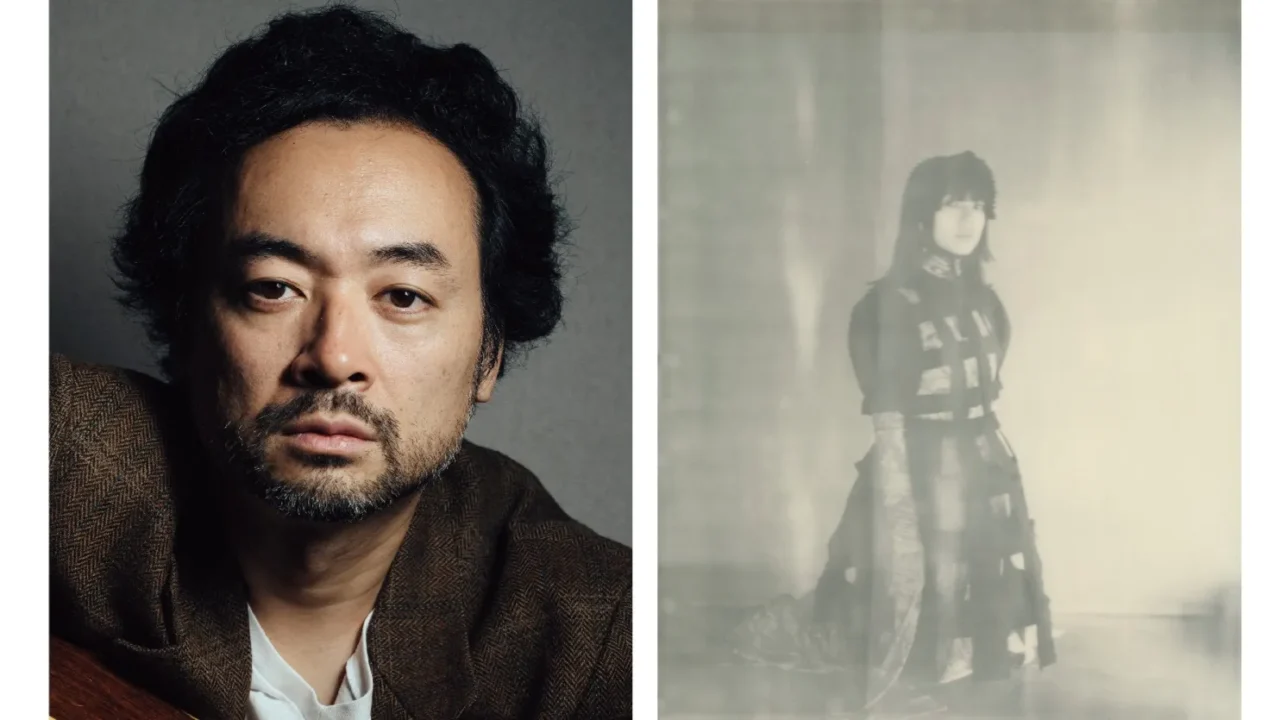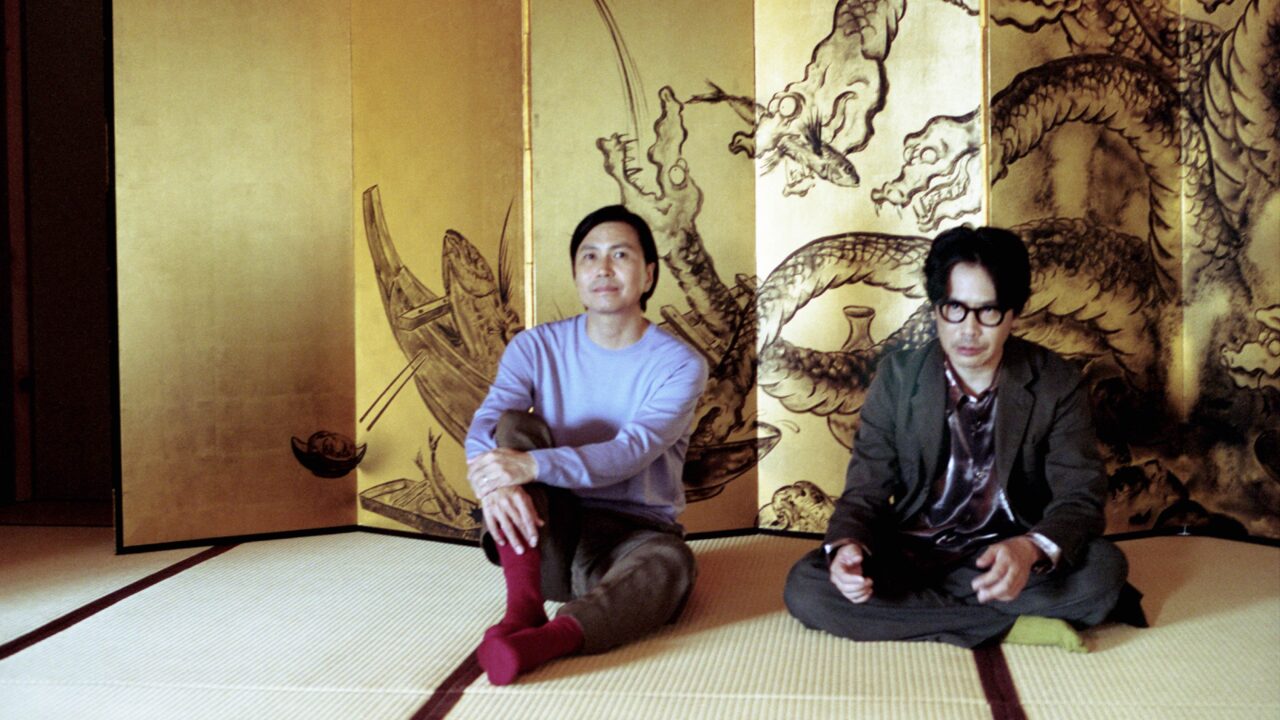A circle of friends connected by goo touch! The “FIST BUMP” corner of the radio program “GRAND MARQUEE” features people who live and enjoy Tokyo in a relay format.
On October 2, Kyouhei Hashimoto of “Nikomist,” an enthusiast of stewed dishes, will appear. We talked mainly about the charm and depth of “stew” including “offal stew”.
INDEX
Defining “Stew”
Takano (MC): First of all, the name “Nikomisto” is super nice. Did you come up with this one, Mr. Hashimoto?
Hashimoto: I got it from Sujitaro Tamabukuro of Asakusa Kid, and we published a book together in 2020, at which time he named me “Nikomisto” so I took the liberty of calling myself that.

Takano: Wow, in person. Where did you meet him?
Hashimoto: Tama-san runs a snack bar in Akasaka, and I was introduced to him there. While talking with Tama-san, we got into the topic of liking stewed food at a popular bar, and he asked me, “Well, do you know that stewed food?” I answered three or four questions, and he said, “Okay, let’s publish a book”.

Takano: It’s amazing how the connection created by offal stew or how the name “Nikomist” came about from there.
Hashimoto: Yes, it is. I really appreciate it.
Takano: Once again, I would also like to ask you about what is Stews.
Celeina (MC): Well, the definition.
Hashimoto: It’s just my definition, but I think one way is that it contains parts that finally become tasty after being stewed.
Celeina:It tastes better only when it is stewed than when it is served as it is.
Hashimoto:That’s right. The beef is not tasty unless it is stewed, because it has a bad smell or is hard. I think of stewing them and serving them as “offal stew”. So, although dishes such as kakuni are stewed, I don’t feel that I am eating stewed.
Takano: I see. When I go to an izakaya with my friends, I always order stewed. Whenever I say, “Let’s order the stew,” someone always says, “That sounds good”. Everyone supports it in their hearts, but until now, it has not been talked about much.
Celeina: Wait, are you the one from “Nikomist”?
Takano: Me too? No, I’m not. I don’t even call myself that(haha). I don’t know much about it, but I love offal stew.
Celeina: So you are Hashimoto-san’s apprentice.
Takano: I even want to be your apprentice today.
Hashimoto: So, you are the first one.
Takano: I was the first (haha).
INDEX
Learn about the local food culture by eating stewed food.
Celeina: You are getting excited right away, but I understand that offal stew is a popular bar dish that originated in Tokyo around the Meiji era (1868-1912).
Hashimoto: I think stewed food was born in various places in Japan, but Tokyo is definitely the Mecca of offal stew.
Celeina:I didn’t realize that. When did you become an enthusiast?
Hashimoto: About 15 years ago, I was quite shocked when I ate stewed beef at a restaurant called Kishida-ya in Tsukishima. Depending on the restaurant, they use beef or pork, miso-based, soy sauce-based, or salt-based stew, but I was surprised at how different it was. Kishida-ya’s stew is very thick and contains beef stomach and cartilage, but I was hooked when I realized how tasty and deep it was.
Takano: Sounds delicious. I want to try it now.
Celeina: Is there a difference between the trend of offal stew in the Tokyo area and that in the Kansai area?
Hashimoto: They are totally different. In Kansai, there is no such thing as “offal stew” and “doteyaki,” which is made with beef tendon, is called “offal stew”. But in the Chukyo area, stewed pork intestines and stomachs are called “Dote”. In Tokyo, there is also beef, but mostly pork is stewed.
Celeina:So it’s like you can see a kind of local backbone just by eating stewed pork.

Hashimoto:That’s right. I think stewed food is something that is stewed together with indigenous food culture, and that is what you can find in a restaurant like a popular bar. You don’t find it in newer restaurants, but when you go to an old restaurant, you can see that this kind of food culture exists there.
Takano:I didn’t know offal stew was this deep.
Hashimoto: I also like to pair it with local sake.
Takano: I’m sure the flavors are different, and the drinks that go well with them are also different.
Celeina:How many cups of offal stew have you eaten so far?
Hashimoto:I haven’t counted at all, but I would say about 4000.

Celeina:4000? Is it like you have eaten it every day for 10 years?
Hashimoto: Yes, there was a time when I ate two cups a day.
Takano: it is truly “Nikomist”. You can talk so much about offal stew. And in July of this year, you launched “Zekkei Sakeba,” an information website specializing in popular bars.
Hashimoto: It consists of a map and something like today’s news. There are pins on the map, and when you tap a pin, it takes you to an article introducing that restaurant. There are pins all over the country, so the map is designed so that no matter where you go on a business trip, you won’t miss a bar.
Takano: I saw this map myself, and there are so many pins, it’s a huge amount of information.
Hashimoto: It was very difficult to input the information.
Takano: This is information written directly by the writer, so it is reliable.
Hashimoto: Yes, it is. I approached several bar writers who really seem to be in that line of work already and asked them to cooperate.
Takano: I hope everyone will check it out. Now, I would like to send you a song here. I asked Mr. Hashimoto to choose a song that we would all like to listen to together on this hour radio. What kind of song is it?
Hashimoto:Yes, it’s called “Clint Eastwood” by Gorillaz. I really like the hip-hop group HIEROGLYPHICS, and there is a rapper named DEL THE FUNKY HOMOSAPIEN who is featured in this song. I go to “Fuji Rock” every year, and when Gorillaz came to the Green Stage, I went to the front of the line for the first time, hoping DEL would come out. In the end, they didn’t come out, and I only heard their voices, but I have a very strong emotional attachment to this song. Also, every year at FUJI ROCK, there is a restaurant in Shibukawa, Gunma, called Nagai Shokudo, which is famous for its stew, and eating it is one of the things I look forward to at Fuji Rock.
Celeina:What? You mean offal stew?
Hashimoto: Yes, that’s right.
Celeina:I want to eat it.
Takano: Next year, I’ll be going to Fuji Rock from the perspective of offal stew. So, Let’s listen to the Gorillaz song.
INDEX
I don’t want to lose the old bar.
Celeina: I sent you Gorillaz “Clint Eastwood” selected by Hashimoto-san. It’s getting a little cooler today, so it’s perfect for your offal stew debut, don’t you think?
Takano: It sure would be nice.
Celeina: Hashimoto-san, do you have any recommendations for listeners in Tokyo who would like to have a delicious stewed dish later today?
Hashimoto: Since we are in Roppongi, there is a restaurant called NAWA-Noren in Ebisu, which is only one line away on the Hibiya Line. It’s a stand-up bar, and the stew here is beef. The sweetness of the fat and the flavor of the beef are outstanding, and I highly recommend you try it. Most people order a “ball” to go with it.
Celeina:Do you call a highball a ball?
Hashimoto:Yes. There are areas where saying “ball” is understood. In places like Koto-ku and Katsushika-ku, if you ask for a ball, you will get something like shochu highball or special highball.
Celeina: So tonight, I should say a ball and a bowl of stewed at NAWA-Noren in Ebisu.
Hashimoto: By all means, it’s delicious.
Takano: This one is also listed in “Zekkei Bar”.
Hashimoto: Of course.
Celeina: There are so many bars listed here, and I hear it’s popular among overseas users as well.
Hashimoto: According to the analytics, the site is viewed from about 25 countries, and we receive quite a few messages.
Celeina:After all, Japanese pubs may be a uniquely Japanese culture.
Hashimoto: Yes, I think that people from overseas also want to go to deep bars.
Takano: I hear that even the younger generation is using them quite a bit now.
Hashimoto: If you go to places like Yokocho, there are a lot of young people there.
Takano: It is good, is not it? I have a question for you, but I think that good bars often have issues such as an aging population and problems with succession. If you has anything to say about that.
Hashimoto: In fact, many Chinese restaurants owned by owners around 75 years old are going out of business these days, so I think it would be great if we could find some kind of matching with Zekkei Sakaba. I don’t want to destroy good bars, I want to encourage them.
Celeina:Matching young people who want to help the store with someone who wants to help. That is important.
Hashimoto:There are many stores that close because of difficulties in finding successors or because of the aging of the buildings.
Celeina:First of all, it is important for us to visit popular bars.
Takano: We have to eat delicious offal stew.
Celeina:Also, today is the first anniversary of our program, and we are asking our listeners, “Do you have any personal anniversaries? Hashimoto-san, do you have any personal anniversaries?
Hashimoto:I always go to Kishida-ya once a year. It’s like being in a dream, but I go there to experience the space and the manners of the restaurant, as if I am going back to the very beginning.
Celeina:It’s already the anniversary of the stew.
Takano: That’s nice, like a salad anniversary.
Celeina:I’m interested in the Ebisu restaurant, but I also want to check out Kishida-ya in Tsukishima as a must.
Hashimoto: By all means. It is a very famous restaurant.
Celeina:I’ve been introduced to your friends through the “FIST BUMP” circle of friends connected by goo touch.
Hashimoto: This is Zin Toshio, a professional cheerleader, or rather, an inspiring man who writes cheer songs in various places.
Celeina:In a word, what kind of person is he?
Hashimoto: Already, exciting.
Takano: Thank you very much. Tomorrow, we will welcome Japan’s only cheer song producer, Zin Toshio.
Celeina: “FIST BUMP” today we welcome Kyouhei Hashimoto of Nikomisuto. Thank you very much.

GRAND MARQUEE

J-WAVE (81.3FM) Mon-Thu 16:00 – 18:50
Navigator: Shinya Takano, Celeina Ann




















